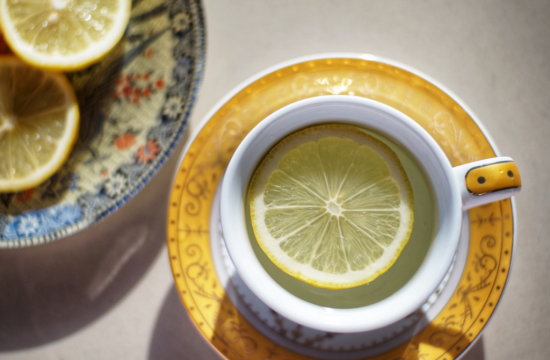Article by Dr Raghuram Y.S. MD (Ay) & Dr Manasa S, B.A.M.S
Baker’s Cyst
A fluid filled swelling or bump formed on the back of the knee is called Baker’s Cyst. It is also called a popliteal cyst or synovial cyst. When damage occurs to the knee joint or its surrounding tissues, excessive fluid drains into the knee joints and accumulates at the back of the joint and forms a sac. This is called Baker’s Cyst. These cysts cause pain, discomfort or restrict the movements in the joint, all of them also can occur.
Inflammation, infection or injury may cause Baker’s cyst. One or more causes may be causal.
To put it short, ‘when the knee joint produces an excessive amount of synovial fluid, it can accumulate in the popliteal bursa, leading to the formation of a Baker’s cyst’.
Baker’s Cyst: Ayurveda Understanding
Dosha connection
Overproduction and accumulation of synovial fluid in the popliteal bursa is the main event behind formation of Baker’s Cyst. From an Ayurveda perspective we can consider this condition as excessive formation and accumulation of kapha in the knee joint.
Shleshaka Kapha is a subtype of kapha which is located in the bony joints of the body. In a state of balance, it lubricates the joints and facilitates easy movement of joints. When shleshaka kapha increases beyond normal permissible limits inside and around the joints, it can cause swelling, either in the front or sides or back of the joints (knee joint in this context), impart pressure on the joints and cause symptoms like pain and heaviness.
Granthi / Kaphaja or Shlaishmika Granthi
Since Baker Cyst is a fluid filled lump, it can be considered as kaphaja / shlaishmika granthi. Since they are benign growths, they cannot be classified under arbuda.
These cysts are formed due to the severe vitiation of kapha. The symptoms caused in this condition are also due to kapha involvement.
In this condition, the cysts are cold to the touch and are of the colour of the skin, have less of pain and severe itching, are stony hard in consistency and grow very slowly in size. When they break open, they discharge white coloured pus.
If such a granthi is formed at the back of the knee it can be considered as Baker’s cyst. Baker’s Cyst is also caused due to infection. When there is infection and suppuration, there will be discharge of pus. So, Kaphaja or Shlaishmika Granthi can be correlated with infected Baker’s Cyst or Baker’s cyst caused due to infection.
Medoja Granthi
This is another type of granthi whose appearance and consistency resembles that of Baker’s Cyst.
The cyst herein is unctuous, large in size and is associated with itching and devoid of pain. When it breaks open, fatty discharge resembles the paste of sesame seeds or ghee.
The appearance of discharge resembles that of synovial fluid. Medoja Granthi can occur anywhere in the body but when it occurs on the back of the knee joint, it resembles the clinical presentation of Baker’s Cyst.
Shotha
Baker’s Cyst and the swelling occurring therein are either caused or triggered by infection, inflammation or injury. We need to look at this from the perspective of ‘Shotha’ explained in Ayurveda texts.
Shotha is a term which encompasses various types of swellings, inflammatory and non-inflammatory, everything.
With inflammation being an important event in the causation of this condition, pittaja shotha can be thought of in its nearest correlation. Abhighataja shotha which is a swelling caused by injury can be brought into closer correlation with Baker’s cyst caused due to injury.
Pittaja Shotha
The swelling caused by vitiated pitta is smooth in texture, emits specific smell, is black, yellow or red in colour, associated with giddiness, fever, excessive sweating, thirst, intoxication, burning type of pain, has clear pain and redness of eyes. It presents with a severe burning sensation and suppuration.
All these symptoms indicate that the swelling is inflammatory in nature. Baker’s Cyst is also caused by inflammation and can exhibit inflammatory symptoms.
Kaphaja Shotha
The swelling caused by vitiated kapha is heavy, firm (fixed, immobile), pale in colour and is associated with anorexia, nausea, excessive sleep, vomiting and low digestion strength (fire). The appearance and disappearance of this swelling is very slow. When pressed for a few seconds and the pressure released, the swelling rises to the surface very slowly. The swelling is predominant during the night time.
Abhighataja Shotha
The swelling caused by external injury or contact of anything which causes swelling can be considered as abhighataja shotha. It is caused by injury from sharp / blunt instruments or weapons, contact of heavy breeze, snow, juice of Semecarpus anacardium or bristles of Mucuna pruriens etc. These swellings tend to spread in all directions, and will be associated with rise in temperature, redness of the affected part and symptoms of pitta aggravation. This picture looks similar to inflammatory swelling or edema. Inflammation and injury are the important causes of Baker’s Cyst. Abhighataja Shotha, which shows signs of injury and inflammation, when occurs on the posterior region of the knee joint can be considered as Baker’s Cyst.
Sandhi Vikruti
Various kinds of arthritis can cause Baker’s cyst – osteoarthritis, rheumatoid arthritis and gouty arthritis affecting the knee joint. Shotha is a part and parcel of sandhigata vata, amavata and vatashonita too, which correlates closely with the above-mentioned conditions respectively. According to Ayurveda, all these conditions also present with shula or Vedana – pain, and knee pain is also explained amongst the symptoms of Baker’s cyst. Pain worsening with physical activity or prolonged standing in Baker’s Cyst is due to pressure on nerves and surrounding tissues, which may happen due to excessive accumulation of shleshaka kapha or vata getting aggravated due to injury or pitta due to inflammation. Rakta and ama may also be involved in the pathogenesis as in vatarakta and amavata respectively. Stiffness and limited mobility of the knee joint / joints can occur due to the affliction of the joint by morbid kapha, vata or both.
Kroshtuka Shirsha
It is a swelling which occurs at the centre of the knee joint (may also occur at the back of the knee as in Baker’s Cyst), caused by combined aggravation of vata and shonita (rakta, blood) and is associated with severe pain. The swollen knee joint looks like the head of kroshtuka / srugala – jackal and hence the name Kroshtuka Shirsha.
Dhatu Connection
Since we are speaking about the knee joint, janu sandhi – all structures involved in formation of the joint should be considered to be afflicted in the disease. The joint is made up of bones of thigh and leg. So asthi dhatu is the main dhatu involved. The rakta, mamsa and majja dhatu therein are also involved in the disease process.
Marma Connection
Janu Sandhi is an important Marma and is located in the janu sandhi – knee joint. It is a ‘sandhi marma’. Mamsa – muscles, Sira – blood vessels, Snayu – ligaments and tendons, Asthi – bones and Sandhi – joints are the components in each marma. The category to which it belongs depends on which component is predominant in that marma. In Janu Marma, Sandhi component is predominant in comparison to the other components and hence is a Sandhi Marma.
It is also a Vaikalyakara Marma – i.e. a vital spot which causes deformity when injured.
When Baker’s Cyst progresses and involves the marma component as it gets chronic, and when not addressed by proper and timely interventions, the prognosis becomes difficult or in spite of proper treatment, the disease would leave its footprints and present in the form of frequent occurrences or relapses.
Ayurveda Treatment Principles and Considerations for Baker’s Cyst
Nidana Parivarjana
The main approach will be ‘avoiding’ the causative factors or triggers of the disease. They may be etiological factors causing or triggering the disease, disease causing doshas or both.
Panchakarma therapies
Vamana may be ideal when there is plenty of fluid accumulation in the cyst, when there is severe vitiation of kapha afflicting the knee joint and there is also systemic aggravation of kapha and the swelling is large and associated with heaviness, stiffness, hard and movements restricted.
Virechana is ideal when inflammation causes the swelling of the cyst, when there is severe vitiation of pitta afflicting the knee joint and there is also systemic aggravation of pitta with widespread inflammation, when there is aggravation of rakta, or when the swelling is caused by aggravated vata and rakta, as in vatarakta and when the swelling is associated with other pitta symptoms like redness, burning sensation and raised warmth around the swelling.
External Treatments
Lepa Chikitsa – Application of medicinal pastes like Dashanga Lepa or Rasnadi (churna) Lepa which are hygroscopic in nature are effective. As per dosha predominance, different medicinal powders can be used to prepare lepas and apply on the afflicted jjoint / joints. Useful powders include Kottamchukkadi Churna, Ellum Nishadi Churnam and Grihadhumadi Churnam.
Dhanyamla Dhara – shall be done in presence of inflammatory signs around the swelling and if inflammation is also causal.
Pradhana Vyadhi Chikitsa
Baker’s Cyst can be a symptom of inflammatory diseases of the knee, injury or infection as already said. These causes or whatever causes them should be treated.
From Ayurveda perspective, Baker’s Cyst may be treated on the principles of treating the below mentioned conditions –
– Shotha – pittaja, kaphaja, abhighataja
– Granthi – kaphaja, medoja,
– Sandhi Vikriti / Roga – Amavata, Sandhigata Vata, Vatarakta, Kroshtuka Shirsha
Shastra Chiktsa
In extreme conditions when the swelling / cyst needs to be cut open and the contents drained to protect the knee joint and when the medicinal approaches are not yielding results, surgery should be preferred. Chedana – incision (indication – granthi), Bhedana (indication – vataja, pittaja and kaphaja granthi), Visravana – drainage (indication – eka deshaja shopha – inflammatory edema confined to one place or one part of the body and granthis) are the preferred surgical procedures for Baker’s Cyst.
Beneficial Formulations
– Dashamula Kashayam
– Punarnavadi Kashayam
– Rasnaerandadi Kashayam
– Patoladi Kashayam
– Guggulutiktakam Kashayam
– Varanadi Kashayam
– Brihahtyadi Kashayam
– Amavatari Kashayam
– Kokilaksham Kashayam
– Dashamularishtam
– Punarnavasavam
– Kanchanara Guggulu
– Kaishora Guggulu
– Simhanada Guggulu
– Triphala Guggulu
– Gokshuradi Guggulu
– Punarnavadi Guggulu
– Punarnavadi Mandura
– Shothari Mandura













